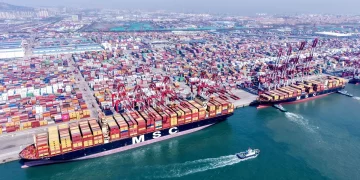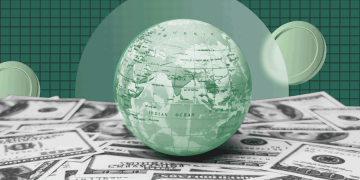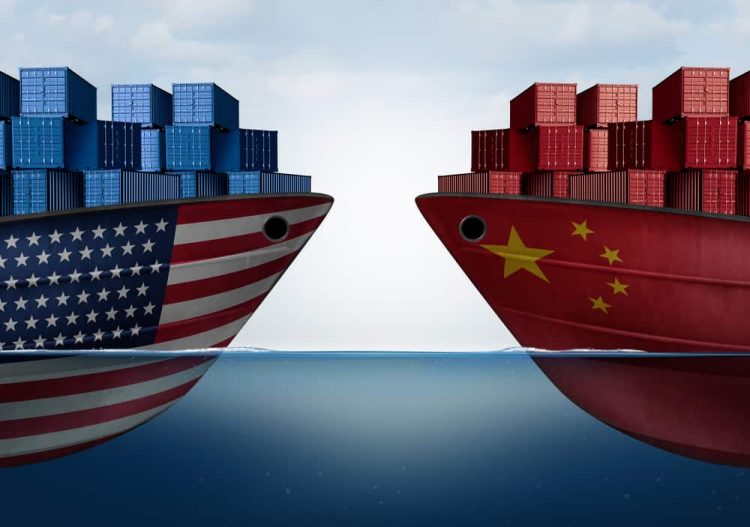Introduction
In recent years, a rising trend toward protectionism has increasingly shaped global trade dynamics, challenging the long-standing era of globalization. As countries impose tariffs, set up trade barriers, and prioritize domestic industries over international cooperation, the future of globalization remains uncertain. The shift away from free trade agreements and open markets raises crucial questions about how the global economy will evolve and what impact protectionist policies will have on businesses, consumers, and international relations. This article explores the growing protectionist sentiment in global trade, how trade barriers and tariffs are affecting international markets, the future of globalization, and the key industries and regions most impacted by these shifts.
1. Analysis of the Rising Trend Toward Protectionism in Global Trade
The global trading system, which has long been defined by policies promoting free trade, is now facing a series of challenges that are pushing countries toward protectionism. The rise of populist political movements, ongoing trade disputes, and the increasing perception that globalization benefits certain nations while disadvantaging others have fueled this shift. Protectionist policies, such as tariffs, quotas, and import bans, have made headlines in recent years, with several major economies adopting more insular trade strategies.
The Political Climate and Protectionism
A significant driver of protectionism is the political climate in many countries, where leaders have adopted “America First,” “Brexit,” or similar slogans emphasizing national interests over global cooperation. Populist movements, especially in the U.S. and parts of Europe, have capitalized on fears that globalization has led to job losses, wage stagnation, and social inequality. Protectionist measures are often seen as tools to protect domestic industries from foreign competition and to ensure national security in critical sectors like technology and defense.
The Impact of Global Trade Wars
The trade war between the U.S. and China, which began in 2018, marked a significant turning point in the rise of protectionism. Both countries imposed tariffs on hundreds of billions of dollars’ worth of goods, creating a ripple effect throughout the global supply chain. The U.S. also began to withdraw from key international trade agreements like the Trans-Pacific Partnership (TPP) and renegotiated the North American Free Trade Agreement (NAFTA), now known as the USMCA. These actions have signaled a departure from the era of multilateral trade agreements and have raised concerns about the long-term implications for global trade.

2. Expert Commentary on How Trade Barriers and Tariffs Are Affecting International Markets
Trade barriers and tariffs have far-reaching implications for international markets, affecting everything from production costs to consumer prices and supply chain efficiency. Economists and trade experts agree that while protectionist policies might provide short-term benefits for certain sectors, they can have negative long-term consequences for global trade.
Increased Costs for Consumers
Tariffs and trade barriers result in higher costs for businesses, which are often passed on to consumers in the form of higher prices. For example, tariffs on imported steel and aluminum can raise production costs for industries such as automotive manufacturing, construction, and electronics. In turn, these higher costs are reflected in the prices of finished goods. The increased cost of goods and services can lead to inflation, erode consumer purchasing power, and reduce overall economic growth.
Disruption of Global Supply Chains
One of the most significant impacts of protectionist policies is the disruption of global supply chains. Many industries, such as electronics, apparel, and automotive, rely on sourcing components and raw materials from multiple countries to minimize costs and maximize efficiency. Tariffs and trade restrictions disrupt these supply chains, making it more expensive and complex to produce goods. Companies may need to rethink their sourcing strategies and invest in alternative supply chain solutions, which can add to operational costs and reduce profitability.
Retaliatory Measures and Global Tensions
Protectionist policies often lead to retaliatory measures from trading partners, escalating trade wars and increasing tensions between countries. The U.S.-China trade war is a prime example of how tariffs can trigger a cycle of retaliation, harming industries and businesses in both countries. For instance, U.S. farmers were hit hard by Chinese tariffs on agricultural products, while Chinese manufacturers faced tariffs on electronics and machinery. These retaliatory actions can create uncertainty and instability in international markets, further damaging global trade relations.
3. The Future of Globalization in the Face of Protectionist Policies
As protectionist policies gain traction, the future of globalization appears increasingly uncertain. The global interconnectedness that has defined the past few decades of economic growth is now being questioned, with some experts suggesting that a new era of de-globalization may be on the horizon. However, the decline of globalization is not inevitable, and there are several factors that could shape its future.
Technological Innovation and Digital Trade
Despite the rise of protectionism, technological innovation continues to drive global trade. Digital platforms, e-commerce, and automation are opening up new opportunities for businesses to trade across borders without relying on traditional supply chains. For example, the growth of cross-border e-commerce allows small businesses to reach international markets without the need for physical distribution networks. Furthermore, advancements in blockchain technology are making it easier to secure and verify international transactions, reducing the reliance on intermediaries and lowering transaction costs.
Regional Trade Agreements and Economic Blocs
In response to the rise of protectionism, many countries are seeking to strengthen regional trade agreements and economic blocs. For example, the European Union (EU) has continued to deepen its economic integration, while the Regional Comprehensive Economic Partnership (RCEP) was signed by countries in the Asia-Pacific region to promote free trade. These regional agreements may become more prominent in the future as countries seek to maintain trade flows within specific regions rather than relying on global agreements.
The Role of Multinational Corporations
Multinational corporations (MNCs) are major players in the global economy and have significant influence over trade policies. Many MNCs rely on global supply chains to reduce costs and maintain competitive advantage. As protectionist policies increase, MNCs are likely to push for trade agreements and lobbying efforts to ensure continued access to international markets. These corporations may also adapt by diversifying production across different countries to mitigate the risks posed by tariffs and trade barriers.
4. Key Industries and Regions Most Impacted by the Shift Toward Protectionism
The rise of protectionism is already affecting key industries and regions, with some more vulnerable to trade restrictions than others. The industries most affected are typically those with complex global supply chains or those reliant on international competition.
Manufacturing and Technology
Manufacturing industries, particularly those involved in electronics, automobiles, and machinery, are highly exposed to protectionist policies. The automotive sector, for example, has been hit by tariffs on imported steel and aluminum, while tech companies have faced restrictions on the export of semiconductors and other high-tech components. Companies in these sectors are also grappling with supply chain disruptions, which have raised production costs and led to delays in the delivery of goods.
Agriculture and Food
Agricultural exports are another sector vulnerable to protectionism. In the U.S.-China trade war, U.S. farmers faced retaliatory tariffs on key exports such as soybeans, pork, and dairy products. These tariffs significantly impacted agricultural producers, particularly those in rural areas. As global trade barriers increase, farmers in other countries may also face similar challenges in accessing international markets.
Emerging Markets
Emerging markets, which rely heavily on exports to developed economies, are particularly vulnerable to the rise of protectionism. Countries in Latin America, Africa, and Southeast Asia that depend on trade with the U.S. and China may see reduced demand for their exports as tariffs and trade restrictions increase. This could hinder their economic growth and exacerbate existing challenges such as poverty and inequality.
Developed Economies
Even developed economies are not immune to the effects of protectionism. While they may not rely on exports as much as emerging markets, they still face higher costs due to tariffs and trade barriers. The U.S. and Europe, in particular, are likely to feel the impact in sectors such as automotive, electronics, and agriculture. Additionally, the rise of protectionism could hurt multinational corporations based in these regions, especially those with significant exposure to global supply chains.
Conclusion
The rise of protectionism is challenging the traditional model of globalization, with significant implications for international trade and investment. While protectionist policies may offer short-term benefits to certain industries, they can have long-term negative effects on global trade, market stability, and economic growth. The future of globalization will likely depend on how countries respond to these challenges, whether through regional trade agreements, technological innovation, or corporate lobbying efforts. For investors, it is crucial to stay informed about the shifting landscape of global trade and adjust portfolios accordingly to navigate the risks posed by protectionism.































